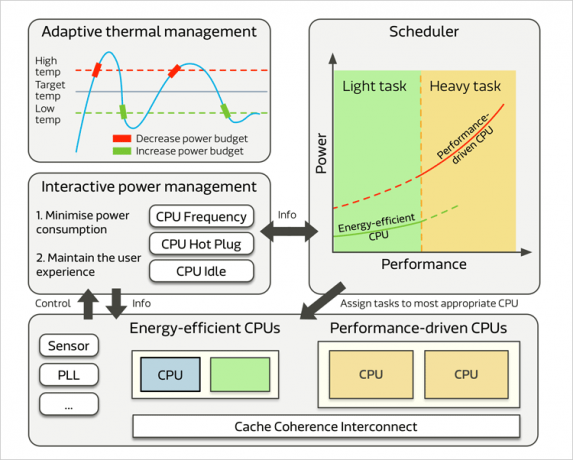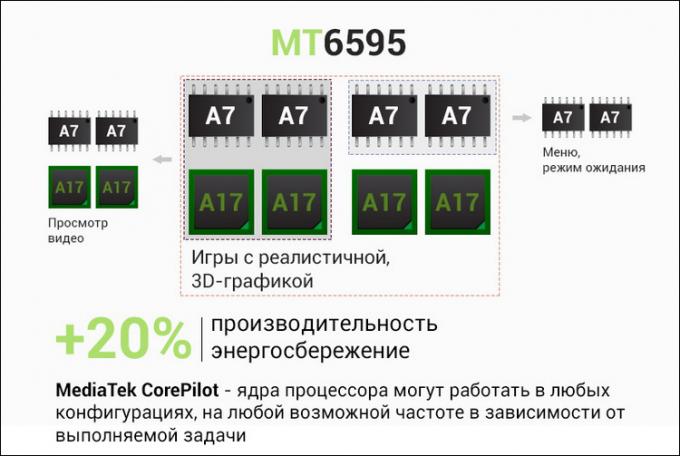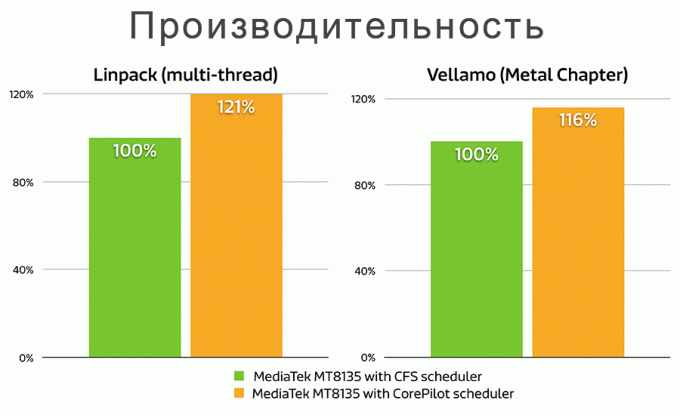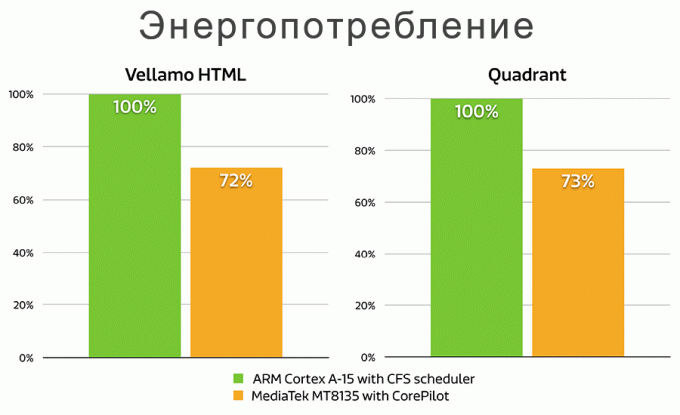As Meizu and MediaTek have made one of the most powerful smartphones on Android
Tips / / December 19, 2019
In one of the posts we have already talked about the smartphone Meizu MX4, high-quality and relatively inexpensive Chinese flagship, which can be called one of the best and most powerful smartphones in 2014. In this post, we decided to investigate, due to which the low-cost Chinese smartphone has become so productive.
Eight cores - luxury or necessity?
Another 3-4 years ago, eight-processor smartphone would be perceived as a luxury or even a joke, but today is the number of cores is justified - it provides the flexibility to control the operation of the smartphone.
And it's not limited to only one performance, at the same time because the chipset smartphone need to seek a balance between power, heat and power unit. Two or four cores clearly not enough, when the mobile device has to adapt to the hundreds and thousands of "shades" loads. And the more accurate the processor selects resources for specific tasks, the better to observe the same balance.
The Meizu MX4 installed chipset MediaTek MT6595 with a big architecture. LITTLE. This allows the processor to include a certain number of "small" cores for simple tasks (music, web surfing) and "large" for demanding processes (3D-games, playback of 4K video). The use of this principle is illustrated in the diagram below: economical core eliminates unnecessary battery consumption in simple applications.

However, big. LITTLE itself is not a panacea - it is important, in any of the three options it will be implemented.
As a heterogeneous system increases productivity
It is the simplest variation big. LITTLE called "cluster migration". This means that low-power core can not work simultaneously with the productive, their intersection is possible. This method has been used in the world's first "eight-» Exynos 5 Octa 5410 in Samsung Galaxy S IV.

The diagram above, you will notice a flaw so hard distinction: the processor loses serious potential performance optimization "on the junction" nuclei of different architecture.
The MediaTek MT6595 rejected such variations and choose the so-called heterogeneous system. Now, the core of any architecture can work in whatever combination. Actually, heterogeneous processor became the world's first MediaTek MT8135, released in July 2013.

MediaTek approached the issue comprehensively, calling its technology CorePilot, whose mission - to kill at least two birds with one stone. On the one hand, to make the most powerful processor on the other - do not turn the smartphone is discharged in 20 minutes and hot as an iron, a toy. Help this brand developments within CorePilot.

Technology keeps on the "three pillars":
- the power management system and thermal processor based on the voltage control and frequency of the nuclei.
- Adaptive Thermal Management Algorithm (ATM). A little later, we will focus on it more.
- RT Scheduler and HMP Scheduler - own task schedulers MediaTek to properly distribute the load across multiple cores of different architectures in different bundles. For example, if the Taiwanese have taken advantage of standard Linux-planner, is the use of eight cores would really be enough. Not least because that CorePilot not only individually select resources for the tasks, but also to change the frequency of each core, depending on the situation.
Detailed consideration CorePilot benefit every aspect possible to devote a separate book, so go straight to the point and Let us examine a concrete example.
ATM for high performance without overheating
In processors for mobile devices, and computer use a mechanism called "throttling" (not to be confused with the "trolling"!). When the processor is working hard, its temperature rises, which ultimately can lead to overheating. To avoid this, upon reaching a certain temperature peak is activated throttling - force processing power is limited, which reduces performance, but allows its cool.
The problem is that usually rigidly specified threshold of, say, 70 or 80 degrees Celsius. In CorePilot said ATM technique, in contrast, acts flexibly and sets "temperature corridor" for dynamic management situation without sharp throttling.
As a result, processor performance is improved by 10% compared with a conventional temperature control system.
It seems that 10% - it's not so much, but because of such trifles and line benefits MediaTek MT6595. In total energy consumption depending on the mode is reduced by 20% and the performance is improved by 20%.
Not least in improving productivity and planners play MediaTek.

Manufacturers Meizu MX4 checked the work of different managers: its proprietary and standard on the same processor, though not an eight, and quad - MediaTek MT 8135. The difference is impressive in performance - see how different metrics in benchmarks.

Superiority in performance is obvious, but at the same time and the power consumption reduced.
The new architecture Cortex-A17 and performance records
In addition to the cluster of four cores ARM Cortex-A7 (1.7 GHz), in an eight processor MediaTek MT6595 first time in the world used kernel architecture ARM Cortex-A17. Sheer ARM claims that Cortex-A17 60% stronger precursor represented Cortex-A9 and 20% - Cortex-A15. Looks quite realistic, at least in the said right at the beginning because - in mega benchmark AnTuTu smartphone Meizu MX4 gaining almost 50,000 points.

Meizu MX4 in the present and future
Of course, Meizu MX4 performance may be higher - at 52,000 points, but it is an average calculated during the test. Imagine that with the highest graphics settings played Asphalt 8 half an hour. Under such conditions, naturally it works the same throttling, which will reduce the advances in AnTuTu. Therefore, the average performance and is lower. However, with other ranking members of acts such as counting system, and all the indicators are obtained lower than the maximum possible.
In early February, ARM introduced a new generation with top-end 64-bit CPU Cortex-A72, which is 3.5 times more powerful than the Cortex-A15 and can be used on the basis of big. LITTLE together with cost-effective Cortex-A53. Year will definitely be interesting - stocking popcorn and get ready to watch the battle chipmakers.



